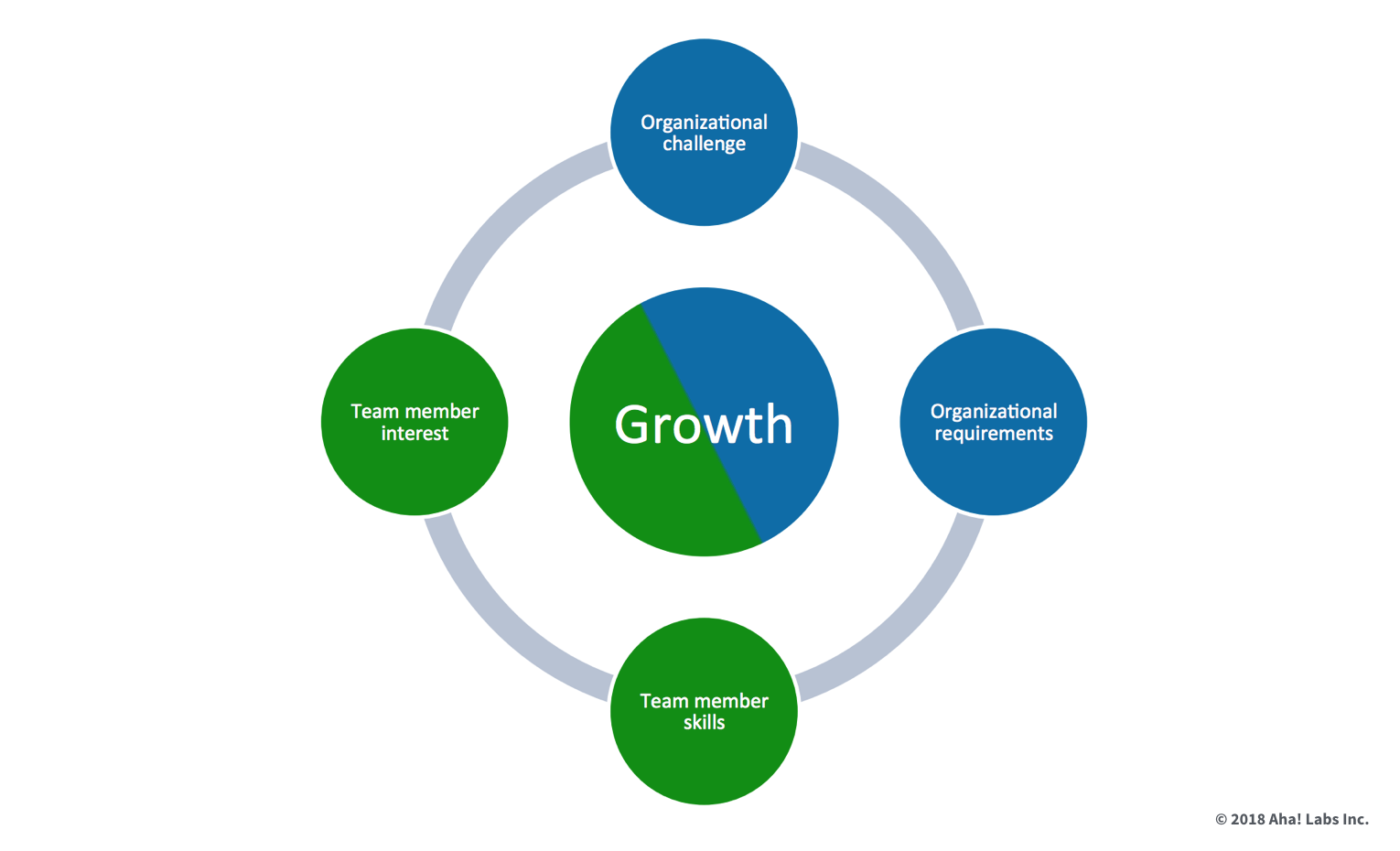
The Founder’s Paradox: How to Promote for Achievement and Not Tenure
The word “promote” is interesting in a subtle way. It can mean different things depending on the context. Advancing in rank or placement. Contributing to growth or increasing awareness. Even presenting something for acceptance. When you think about it within the context of professional development, all of these come into play.
But look closely at those definitions — you do not see career longevity or tenure in the mix.
Sure, in many dysfunctional organizations, how long you have been there or who likes you best may drive the decision-making. I am sure you can think of a few promotions that were accompanied by a company-wide eye roll — of course the VP’s yes-person got a fancy new title, a large group to manage, and a raise.
But with smaller organizations, things get a bit more complicated. The timeboxing is less defined. Consider a rapidly growing company like Aha! — about five years old and matured well past product/market fit and any humble startup beginnings. We now serve thousands of enterprises and more than 150,000 users. We have more than 75 team members working across four continents and eight time zones.
This rapid growth can be bittersweet. Especially when it comes to promoting people. Those first teammates who helped the organization become what it is today have deep value. Many times, early joiners are absolutely ready and able to take on leadership roles. But not always. And this is where many emerging companies go terribly wrong — promoting based on tenure not achievement.
Loyalty is a key human value. But loyalty is not necessarily correlated with profound organizational achievement.
This was difficult to write and it may sound cold to you at first, so let me explain. I am not suggesting that you care less about the people who first believed in the vision and values of your company. As you grow, these folks become more important than ever and should be appreciated and celebrated.
Besides, the team benefits when everyone keeps growing. This is why, from a founder’s perspective, I believe it is my responsibility to build a learning organization. The investment should start early and extend to everyone in the company. It is mutually beneficial — the company builds a deep bench of talent and people grow new skills.
This is wise and good but it does not solve the paradox.
Do you promote based on who was there first? Or do you promote based on who is creating the most value today and has the skills for what the organization needs to accomplish next? You really want to do both — honor people’s loyalty by challenging them with new responsibilities and create exceptional value for the business right now. But that is not always possible.
This will put pressure on you emotionally, as you likely have developed deep and meaningful relationships with the individuals who have been with the company the longest. So let’s unpack the paradox a bit more and consider the complex process of identifying and promoting leaders who can best serve the current needs of the business.
I think organizational need and individual skill must come before loyalty. People deserve to work hard, achieve their best, and be respected and rewarded for it — regardless of tenure.
When I considered this for our team, I did what I often do and created a chart — doing so helps me distill the essence of a concept. We recently shared this chart at our all-company meeting, where we outlined the steps we take when looking for a match between organization challenge and individual skill.
No drama, no mystery. Especially important if your company (like Aha!) has made a commitment to promote from within. Because to truly promote from within requires trust and transparency on both sides.

You can use this chart, along with my suggested action items below, to identify growth opportunities for your own team. Doing this well requires deeply knowing the past, present, and future of your company — you need to know the people as well. (Guessing is not an option.)
1. Start with a clear definition This should be brief (a few sentences) and concentrated on the organizational challenge that requires leadership — either of people or projects. This might require creating entirely new roles within the company structure.
2. Define the requirements List out every requirement needed to solve the challenge. This will be the basis for your job description.
3. Identify people Focus on those who have achieved in the past, either in previous roles before joining the company or work they currently are doing that may overlap.
4. Discuss the opportunity People have their own career ambitions. Honor their path by confidentially sharing the role you are considering to make sure they are interested. You need to know if they have the interest and ambition for what is needed.
5. Do a test project This optional fifth step is to have the person do a test project or two before deciding with them if the new role would be right. This is a great way to give someone a taste for what is expected and to allow both the company and the person to gently back out — no harm done if it is not a great fit.
For example, when we identify someone at Aha! who has the needed skills and seems interested in becoming a manager, we ask them to start helping with candidate interviews. Or, for people who might move into product management work, we start with defining a set of new features and having them work on the requirements. So far, our test projects have worked exceptionally well for everyone.
Remember that it is truly an honor to build something meaningful and lasting.
But also remember that it is simply not possible for your most tenured teammates to be the only ones who can add the most value moving forward. “Being there first” definitely does not mean that they are suited to lead a large team when you need someone to.
A “not now” answer could mean they will be ready the next time a new organizational challenge is presented. This is the power of a growing and learning organization — opportunities and growth abound.
I wrote earlier that growing a company is bittersweet. The reality is that it is way more sweet than bitter. It also is true that aligning what the company needs with what long-serving team members want is not a science. All we can do is strive for our best and move forward with intention.
This is a winning paradox — you would not want it any other way. I know that I cherish the challenge.
As the company grows, people want to grow their careers at Aha! too. I do not take this lightly and I feel proud that so many talented folks have been with us from the beginning and want to continue to contribute to the company in an impactful way.
I also find joy in knowing that, as their skills continue to develop and grow, so will the opportunities to manage teams and take on more senior positions. More leads to more leads to more.
That is the beauty of promoting for achievement — it is inclusive business.
Read more of The Founder’s Paradox.




